WE’VE all cringed at the sight of certain public structures. At one time, some government buildings were a sickly shade of pink guava. Or take the incongruity of some public structures with their surroundings such as the sculpted pitcher plant water fountain across the Kuala Lumpur (KL) City Hall Building near Dataran Merdeka. And in years to come, a new shadow will be cast over KL city in the form of a 100-storey tower called Warisan Merdeka. Will it showcase creativity and innovation, or will it be an eyesore?
It’s not just large segments of the public who are opposed to the RM5 billion Warisan Merdeka project. Thinkers and practitioners in design are sceptical, too about the tower’s value-add to KL from the point-of-view of culture and public use. For good design must not only be beautiful. It must be contextual and accessible to the public, said panellists on The Nut Graph‘s 14 Nov 2010 Found in Conversation event on Creativity and Innovation in Design.
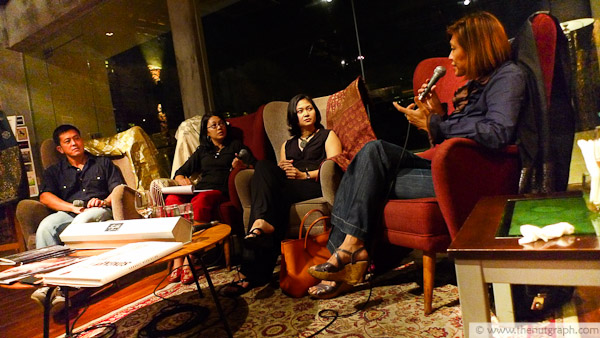
In that vein, is Malaysia losing or gaining creativity and innovation in its designs, be it for modern buildings or traditional craft like songket and pewter? How can ancient crafts be updated and made relevant for today’s market? These were some questions explored by the panellists, Veritas Design Group principal Lillian Tay, Yayasan Tuanku Nur Zahirah chairperson Suryani Senja Alias, and Royal Selangor general manager Yong Yoon Li.
Designing icons
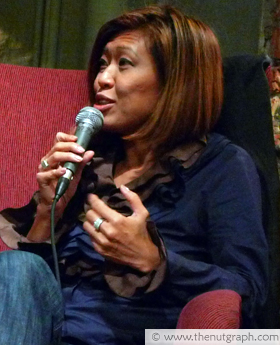
Tay, a Princeton-trained architect and engineer, opined that it was “questionable” whether KL needed another icon like a 100-storey building “so soon” when the city already has the Petronas Twin Towers. The Twin Towers, she said, successfully re-branded KL and made it recognisable around the world.
“It moved the city’s centre of gravity from the old area which couldn’t grow anymore, to a new area and gave the people a new urban park, a philharmonic orchestra hall, and the Petronas Art Gallery. These were the public elements that came along with the Twin Towers that made it worthwhile.
“Warisan Merdeka will need to do the same if it is to justify itself as an icon,” Tay said. She also noted the project’s high cost which could build “three times the amount of space if 40-storey buildings were to be built instead”.
As to whether such a project would give local designers the chance to be more creative and innovative, Tay said even though Veritas was a leading local firm, it had not heard of any design tenders for the project.
Meritocracy in design
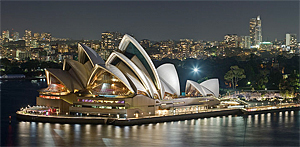
If the nation truly wanted to foster creativity and innovation, it should hold a national or even international design competition for such an iconic project, Tay added. She cited the example of the Sydney Opera House, which was designed by Danish architect Jorn Utzon through an international competition.
Genuine competition with few restrictive conditions is crucial or designers would not have creative freedom, Tay said. She added that the rules in public design competitions were often strict or meant to fit an agenda. Sometimes, the wrong people were chosen as judges. Instead of being experts in design, judges were sometimes people in positions of power who were chosen based on hierarchy.
The “divide between public and private sector” design talent is obvious to Suryani, who noted that some public buildings and structures were “downright ugly”. “It’s symptomatic of things not being done in a proper way and of the lack of competition, whereas the private sector offers more design competitions and awards,” she said.
Valuing the creative process
Tay also said that badly designed buildings came about when design work was a rushed job. “It’s certainly the case in the building industry, which is a service industry,” she said.
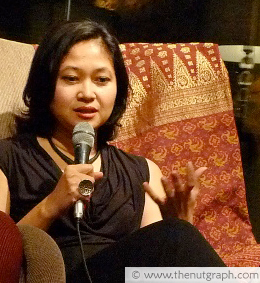
“Designers are not given enough time to work, and we grow to rely on the software to complete the job for us, instead of appreciating the time it takes to hone skills, just like in the traditional arts where artisans take years to apprentice under a master or mentor.
“There is lack of understanding, and perhaps even respect, for the traditional crafts and the whole process of designing and the time needed to develop it and get it right,” Tay said.
For Suryani, this shows the “lack of nurturing” of the arts and heritage in Malaysia. Related to this is the lack of education and funding to develop a talent pool of artisans.
“Here (in Malaysia), we talk down to our talent. We don’t expose them enough to innovations outside Malaysia, and we don’t encourage them to think critically,” said Suryani.
Evolving design
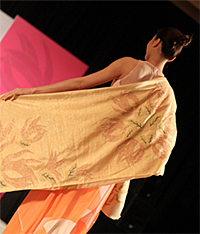
Traditional artisans need exposure to keep them creative, and to break their resistance to new ideas. Suryani added. Her foundation takes its songket weavers to fashion shows to let them see how the fabric of the royal Malay court looks and feels in modern clothing. “The artisans can then make the connection and contextualise their art. It is part of convincing them to try new things with what is a very traditional art,” she said.
The foundation she chairs gives full-time employment to 60 artisans in songket weaving. Through research and development, it has turned traditional, heavy songket into light, modern, wearable fashion. And by innovating and creating a market for new songket designs, the foundation has improved the livelihoods of rural artisans. By doing so, it keeps the skill of songket-weaving alive, including among young people.
Royal Selangor’s bold step to break away from traditional designs and come up with an accessory line that included pendants, cufflinks, bag hooks and charms attracted a whole new market of younger shoppers, said Yong.
“[But] we still retain Malaysian traditional motifs in our designs, such as the use of Malay ukiran from the east coast which are on our Christmas ornaments,” Yong said of the 125-year-old pewter company.
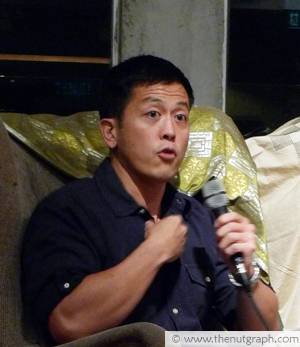
In commercialising design, how do Malaysian designers retain creative integrity and cultural heritage while catering to market tastes? Aren’t originality and tradition compromised if designers produce what the market demands, asked a guest who attended the forum.
It is a constant experiment and balancing act to retain originality and artistic integrity when making traditional designs accessible to people, Yong and Suryani replied. Being able to maintain that balance successfully comes back to the necessary ingredients for nurturing creativity and innovation – open competition, and growing and supporting talent. ![]()
Found in Conversation is a series of conversations hosted by The Nut Graph with our media partner PopRadeeo and venue sponsor Leonardo’s Dining Room and Wine Loft. It aims to link personalities, ideas and people, and to provide opportunities for the public to engage with notable personalities and industry experts. Creativity and Innovation in Design was the last event for 2010. The Nut Graph will notify followers of future events on Twitter and Facebook, or you can sign up for our e-newsletter.
[related-posts]


Ben says
In many developed countries, good design is the embodiment of their culture and represents their way of life towards progress. In architecture, it must reflect the both the harmony and enhancement of the landscape it sits on.
If you look at the topography and the landscape of the proposed site, this proposed phallic development will stand out crudely and obtrusively into everything that is aesthetic about this location.
The twin heritage stadiums which hosted so many great sporting and social events may be destroyed eventually. Not to mention the glorious almae matres of some of our leaders. Further, the environmental and cultural heritage damages caused by this proposed development will be far greater than the positive returns it hopes to get for the adding to the glut of commercial space in KL.
Think of creating real values which is sustainable instead. If you cannot, we suggest you stop destroying values which have stood the test of time.